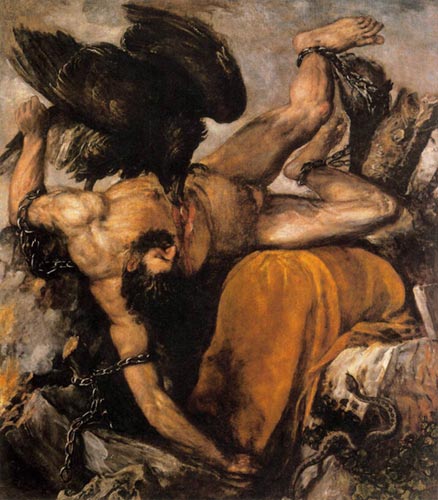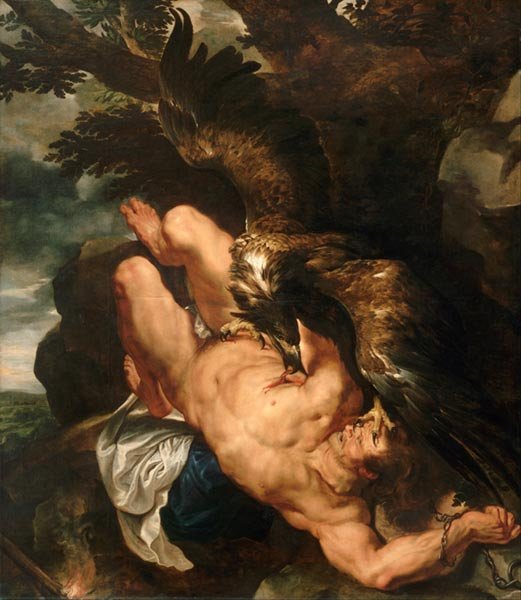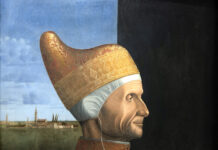Pain, torment, creative struggle, and astounding beauty are only a few words that could describe an upcoming exhibition in Philadelphia.
“Prometheus Bound” is one of the many masterpieces produced by the legendary Peter Paul Rubens (1577–1640). A twisting, contorted, and nude Prometheus is shown struggling in the grips of a massive eagle, which devours the titan’s liver. The subject is from an ancient Greek myth in which Prometheus is eternally punished, chained to a rock by Zeus for stealing fire and gifting it to humans. Rubens has represented the scene in violent detail, the strong diagonal composition from upper left to lower right creating chaos, movement, and tension. Every element that made Rubens one of the most sought artists of his day can be found within this picture, which he himself considered one of his most important works. The muscular body of Prometheus is exquisitely rendered, every tensed muscle indicated with stunning clarity.

Tiziano Vecellio (Titian), “Tityus,” ca. 1548–1549, oil on canvas, 253 x 217 cm.
(c) Museo Nacional del Prado, Madrid 2015
The painting will feature as the centerpiece of an upcoming exhibition at the Philadelphia Museum of Art, which explores how “Prometheus Bound” was inspired by paintings, drawings, and prints. Of particular note is the inclusion of works by both Michelangelo and Titian. The museum reports that, “Despite the significance of Rubens’s masterpiece, no exhibition has ever been devoted to it. “The Wrath of the Gods” shows how the artist’s talent for creating images bursting with physicality, movement, and color was profoundly shaped by the work of Italian Renaissance greats Michelangelo and Titian as well as antique sculpture, especially the Vatican’s famed “Laocoön.”

Michelangelo, “Tityus,” ca. 1532, drawing, (c) Royal Collection Trust 2015
A cast of the Hellenistic sculpture will be on view as well, one of the great sculptures from antiquity to have ever survived. The sculpture proved to be a major source of inspiration for artists after its discovering in the mid 16th-century. Laocoön twists his body with a pained expression as he attempts to rip the giant serpents from himself and his two sons.
The exhibition will undoubtedly be an incredible experience for both the casual and experienced.
“The Wrath of the Gods” opens on September 12 and will be on view through December 6.
To learn more, visit the Philadelphia Museum of Art.
This article was featured in Fine Art Today, a weekly e-newsletter from Fine Art Connoisseur magazine. To start receiving Fine Art Today for free, click here.








